Use perovskite diodes for bidirectional optical signal transmission between two identical devices
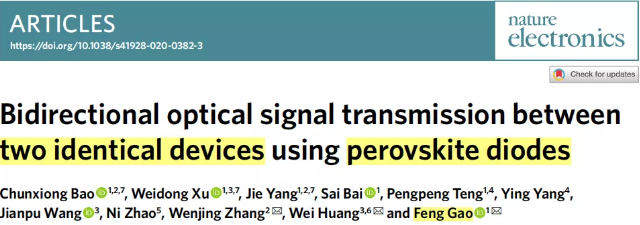
Nature Electronics ,VOL 3,March 2020, 156-164
Integrating the generation and reception of optical signals into one device (thus allowing two-way optical signal transmission between two identical devices) is of great significance in the development of miniaturized and integrated optoelectronic devices. However, conventional solution-processable semiconductors have inherent material and design limitations that prevent them from being used to manufacture such devices with high performance. Here, we report an efficient solution-processed perovskite diode that can work in emission and detection modes. The device can switch between modes by changing the bias direction, and it exhibits light emission with an external quantum efficiency exceeding 21% and a sub-picowatt light detection limit. The operating speed of both functions can reach tens of MHz. Thanks to the small Stokes shift of the perovskite, our diode has a high specific detection rate (greater than 2×10^12 Jones) at its peak emission (~804 nm), allowing two identical Optical signal exchange between diodes. To illustrate the potential of dual-function diodes, we demonstrated that it can be used to create monolithic pulse sensors and bidirectional optical communication systems.
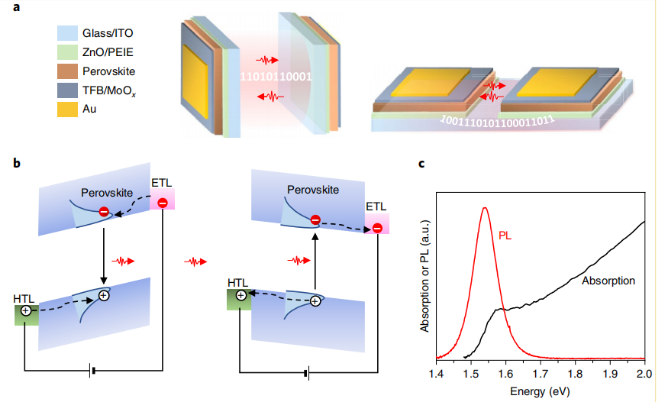
Schematic diagram of dual-function perovskite diodes as light emitting and detection devices
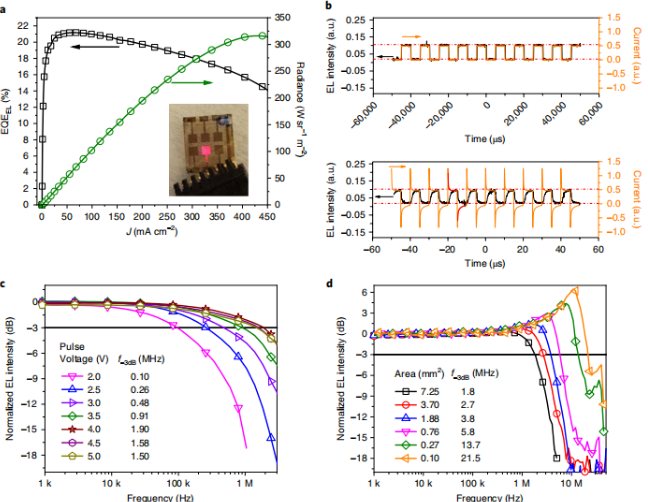
The characteristics of perovskite diodes when used as light
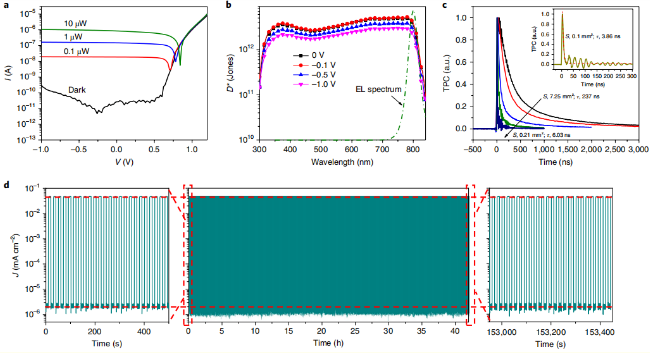
Characterization of perovskite diodes when working as photodetectors
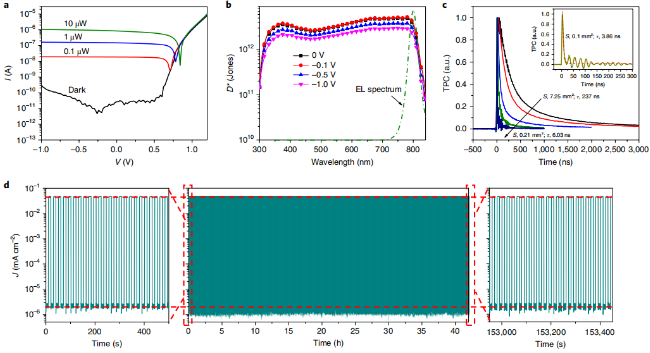
The photoresponse characteristics of the perovskite diode as a photodetector to the light emitted from the same diode used as the LED
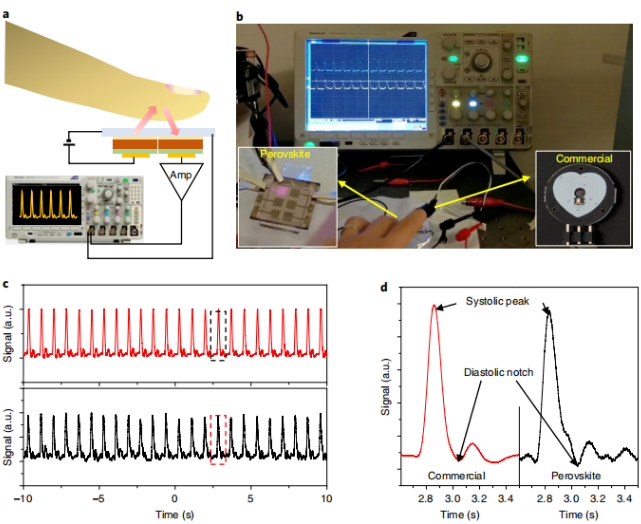
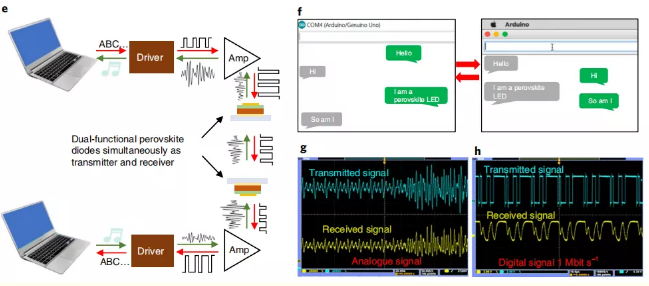
Application demonstration of dual-function perovskite diodes in biomedicine and optical communication
The author has demonstrated that the optical signal transmitter and receiver functions can be integrated into one device using metal halide perovskites. The two functions of the device can be switched reversibly by changing the bias direction. When used as a light-emitting or light-detecting device, the diode shows high performance comparable to the most advanced single-function perovskite devices. The response speed of the perovskite light-emitting device has been systematically studied. For a 0.1mm2 device, the response speed is about 21MHz. Perovskite diodes have high sensitivity to the light emitted by the same diode, which provides a unique opportunity to simplify the integration of optoelectronic devices. We proved this by constructing a monolithic pulse sensor system based on two identical perovskite diodes and a two-way optical communication system. In addition, since the device is mainly limited by parasitic capacitance, we hope to further improve the response speed of the device by reducing the size of the pixel. This will allow the development of high-speed display-to-display communication or data exchange. These characteristics, coupled with the ease of integration on various inorganic substrates and compatibility with complementary metal oxide semiconductors, make this dual-function perovskite diode expected to be used in inter-chip or inter-chip applications in solution-processed optoelectronic integrated circuits in the future. On-chip data link.
+86-18915413828(WhatsApp&WeChat)
Previous: Xian Jiaotong Universi


